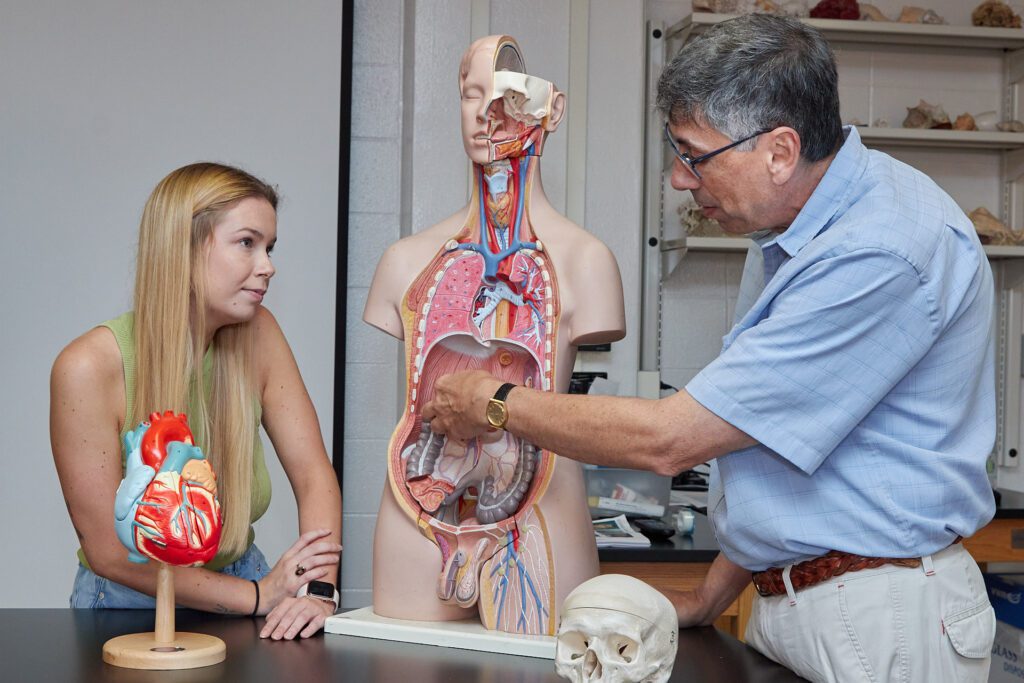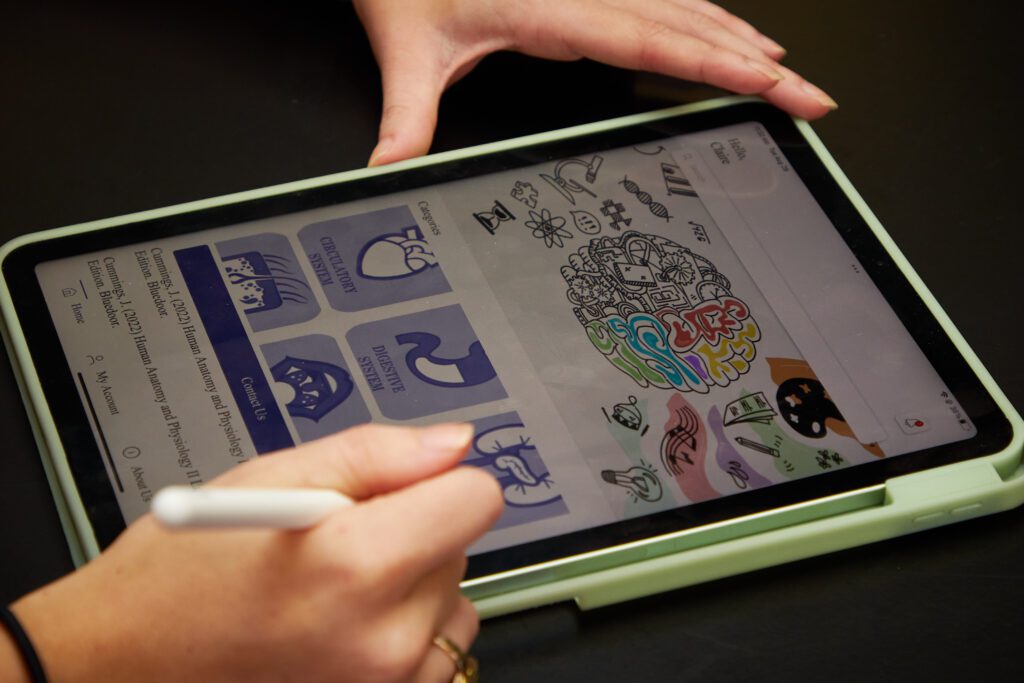“The leg bone is connected to the knee bone. The knee bone is connected to the thigh bone. The thigh bone is connected to the hip bone.” But remembering the lyrics from the classic childhood song “Dem Bones” will get students only so far in anatomy class.
Claire Farrell, a Clemson University health science graduate, has created Anaphy, an app that allows students to study anatomy through an activity loved by children and adults alike – coloring.

During her first year at Clemson, Farrell was visiting a friend and borrowed an iPad to use a color-by-numbers app. Farrell found coloring relieved stress, so she often used the app after a long day of classes.
“My friend and I happened to be talking about how stressed we were about taking Anatomy and Physiology. I just remember thinking, ‘It would be such a good idea to color anatomy drawings and use it as a study tool,’” she said.
She was surprised when she searched the app store and found nothing.
“I put a pin in the idea until after I had completed the course and had more anatomy content knowledge,” Farrell said.
Nothing like it
She searched again after she finished the course and found nothing like what she had envisioned that night in her friend’s room. So, Farrell started researching how to create an app.
“I had absolutely no idea how to go about developing an app,” she explained. She talked to one of her friends, who was a computer science major, to find out what it entailed. “There were many intricacies involved in the process that I was unaware of at first, and I spent the whole development process learning as I went.”
Farrell created an extensive executive summary outlining the app’s purpose, target audience and how it would work.
Farrell approached her Anatomy and Physiology professor, Department of Biological Sciences Principal Lecturer John Cummings, with her idea.
“I thought it was a great idea,” Cummings said. “There were a number of potential hurdles that she needed to make herself aware of, but she had a lot of stuff figured out.”
With Cummings’ support, she continued to work on her app.

Not easy
“I knew that developing an app would not be an easy feat by any means,” Farrell said, “but I truly had no concept of the magnitude of the time and effort it would take to complete the process.”
She juggled developing the app with classes, working as an undergraduate lab assistant and serving as a mentor for FIRST, a University program designed to ensure success for students who are the first in their family to attend college.
“It was such a period of growth for me,” explained Farrell, who wanted to accomplish something during her time at Clemson that would make her stand out.

Anaphy combines color recognition and location association to allow students to study anatomy effectively. It includes multiple anatomy structure diagrams, each with a list of terms and associated colors for each part of the structure. After labeling and coloring a diagram, students submit their colored diagrams and receive personalized feedback, denoting what they got correct or incorrect. The app includes numerous diagrams for all the human body systems.
Farrell presented the app to Clemson students taking Anatomy and Physiology. She and Cummings also conducted a workshop and presented the app at the Human Anatomy and Physiology Society conference in the spring. Farrell won an award in the conference’s poster contest.
Created for students like her
“I was so happy to see that the students really appreciated the app because I created it for them,” she said. “I knew it would have been helpful for me when I took the course, so I hoped it would be helpful for other students.”
This app is available to students taking Anatomy and Physiology at Clemson and other universities.
Cummings said Anatomy and Physiology has a reputation among Clemson students for being a difficult course and students often have high stress levels and test anxiety. He said he is thankful to have played a role in Farrell’s development of the app.
“That’s why I come to work,” he said. “I like to see students awaken to learning, to see students accept the challenges of having to formulate new learning strategies.”
Farrell and Professor Cummings plan to continue working on the Anaphy app to make it more user friendly and accessible for students nationwide.
“It was incredibly rewarding for me to be able to see the success that she brought for herself,” Cummings said.
Get in touch and we will connect you with the author or another expert.
Or email us at news@clemson.edu
